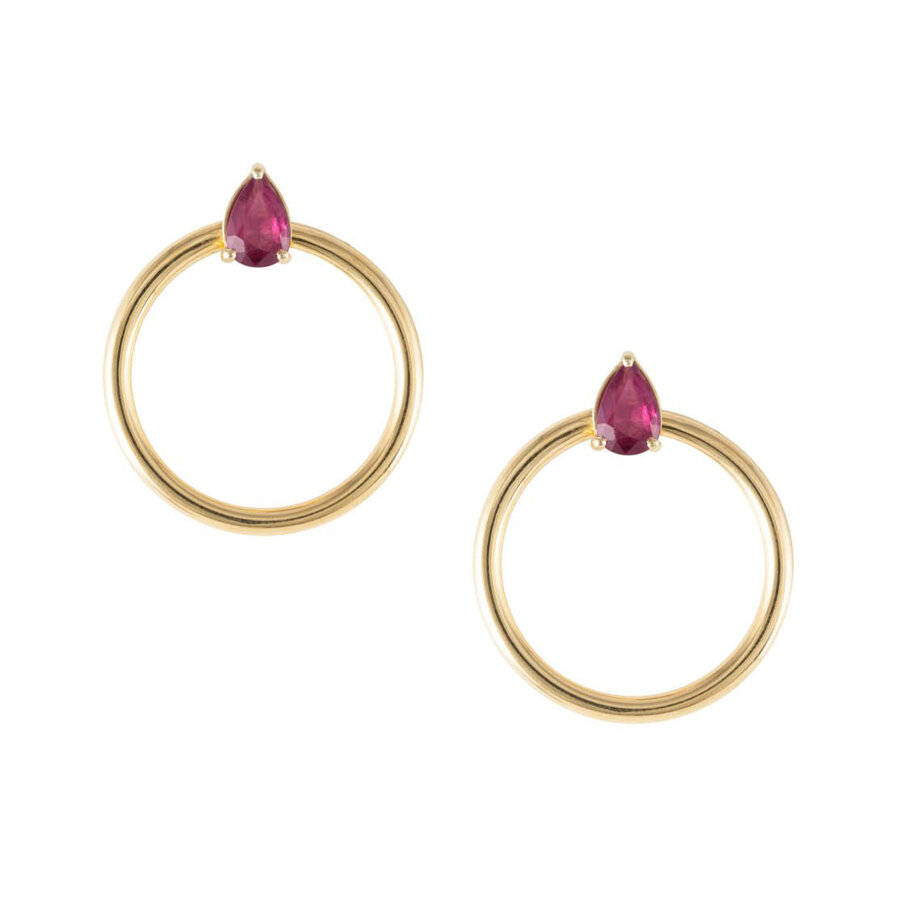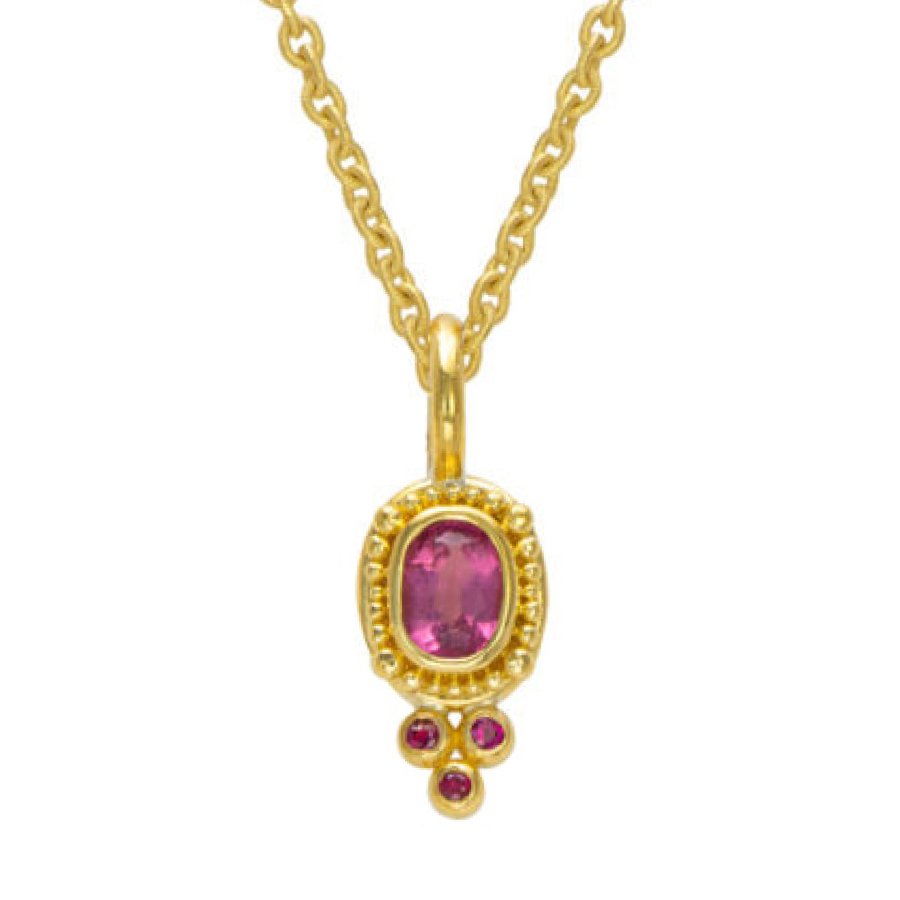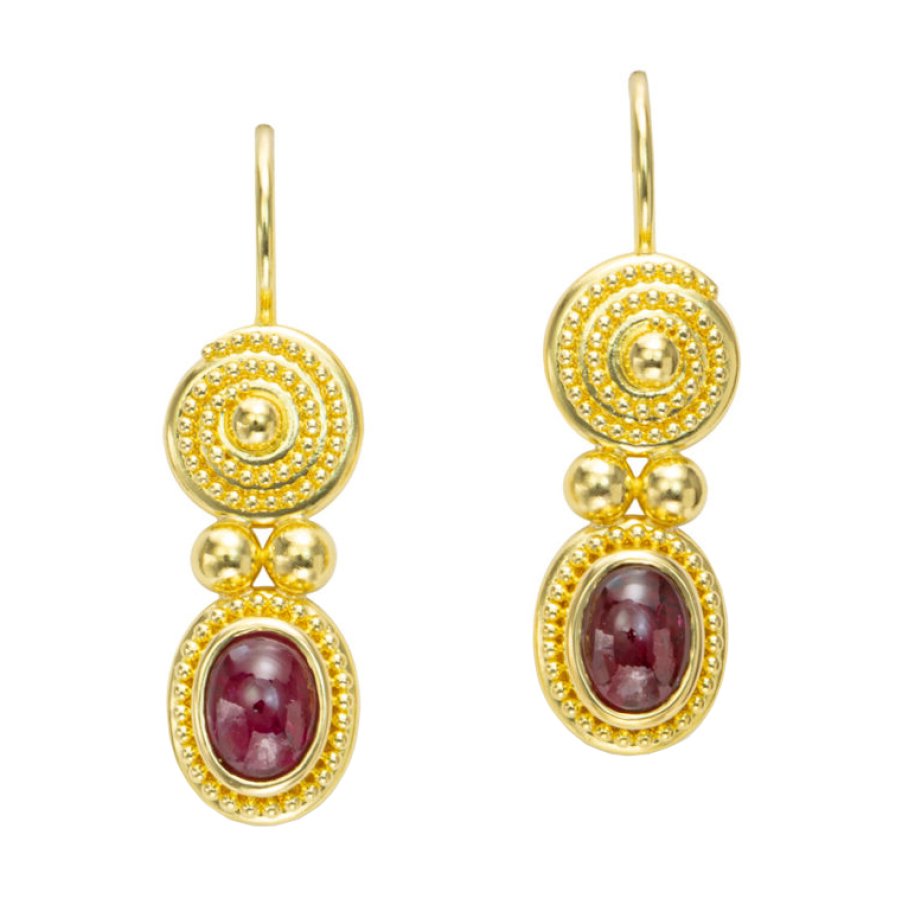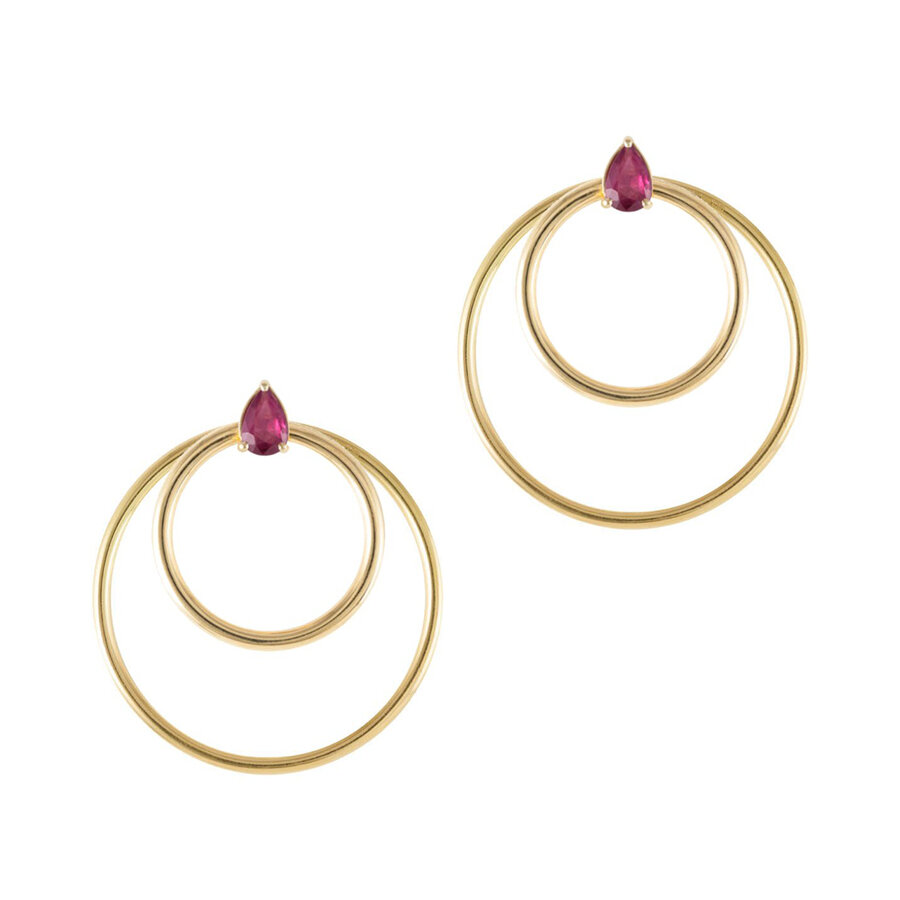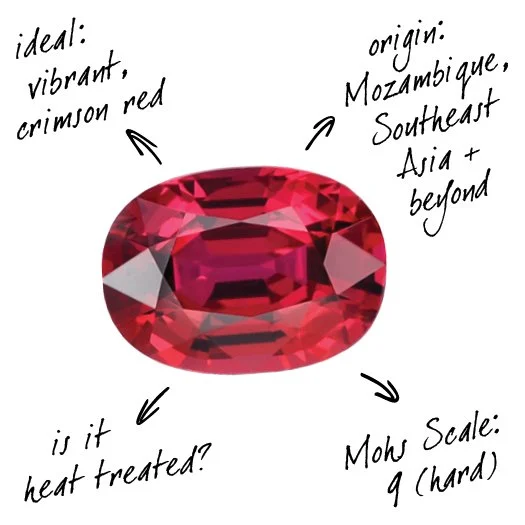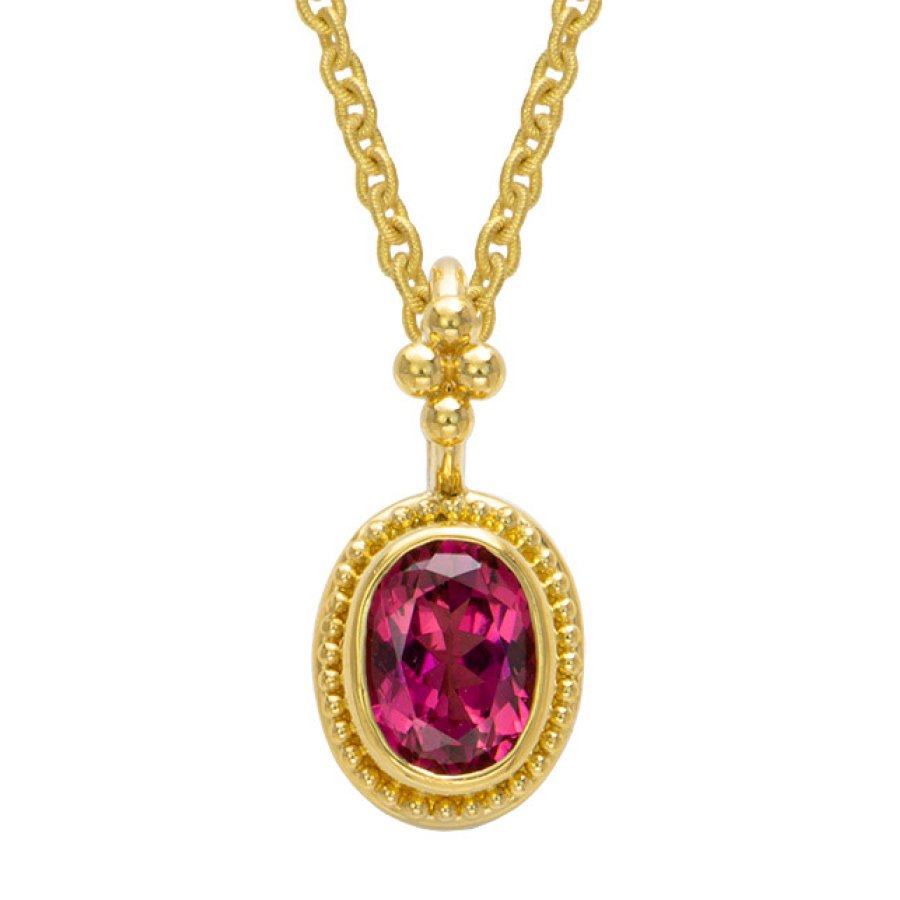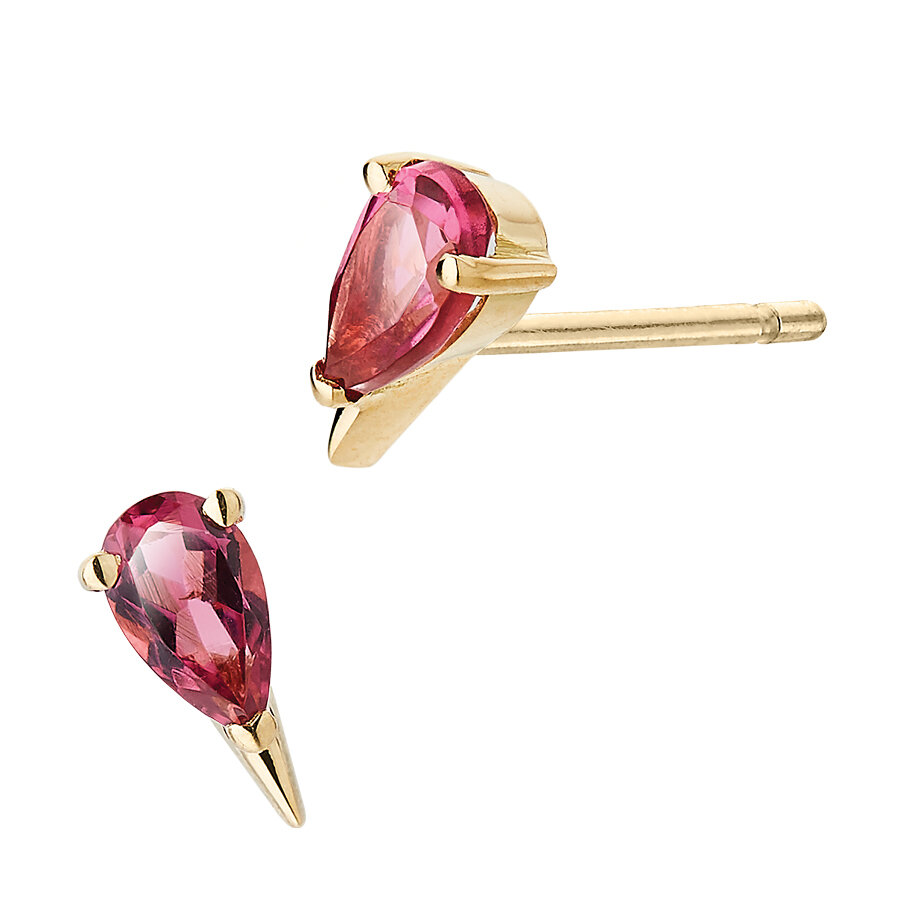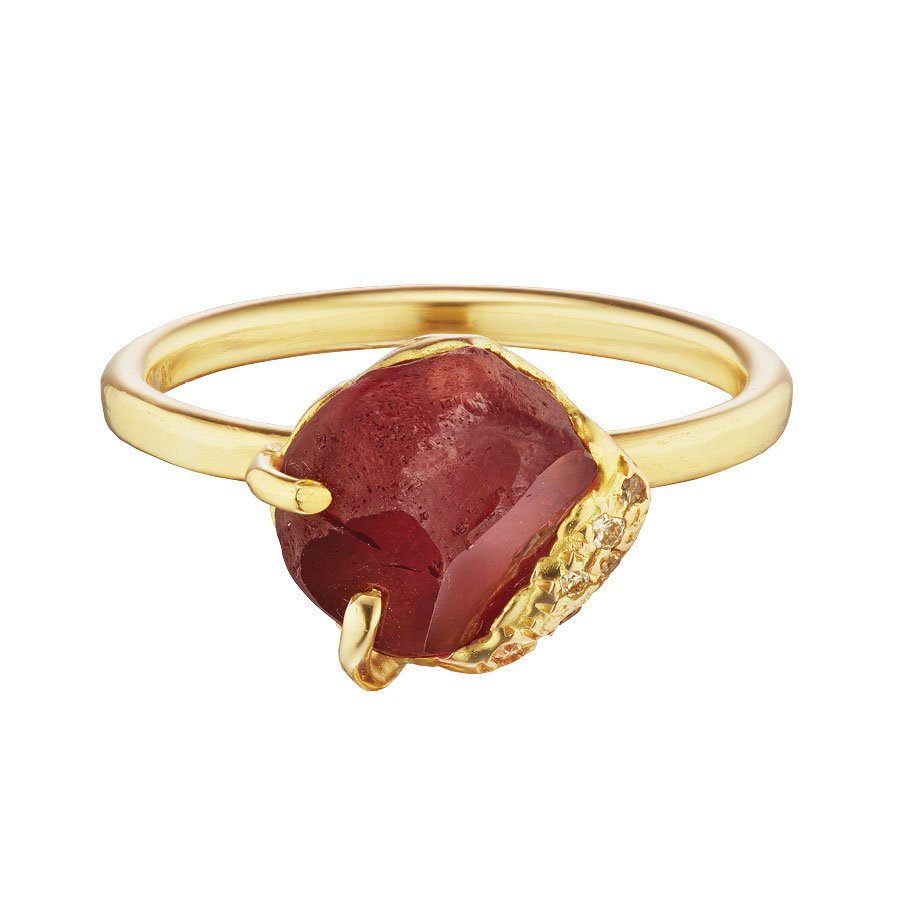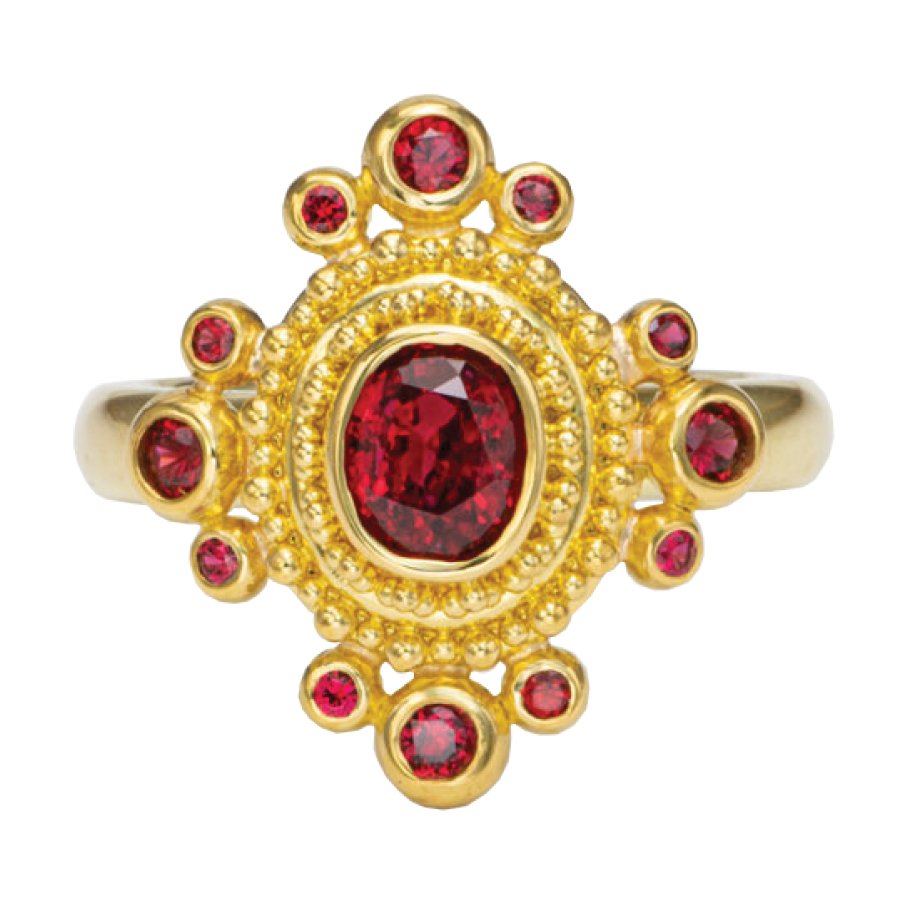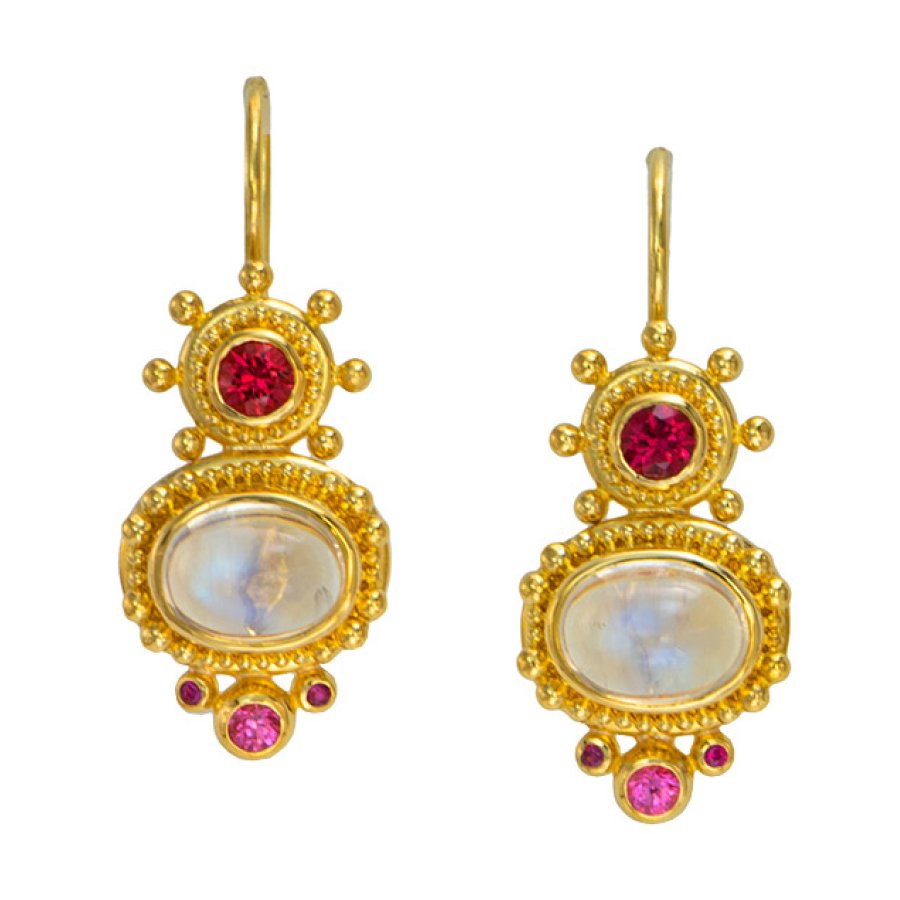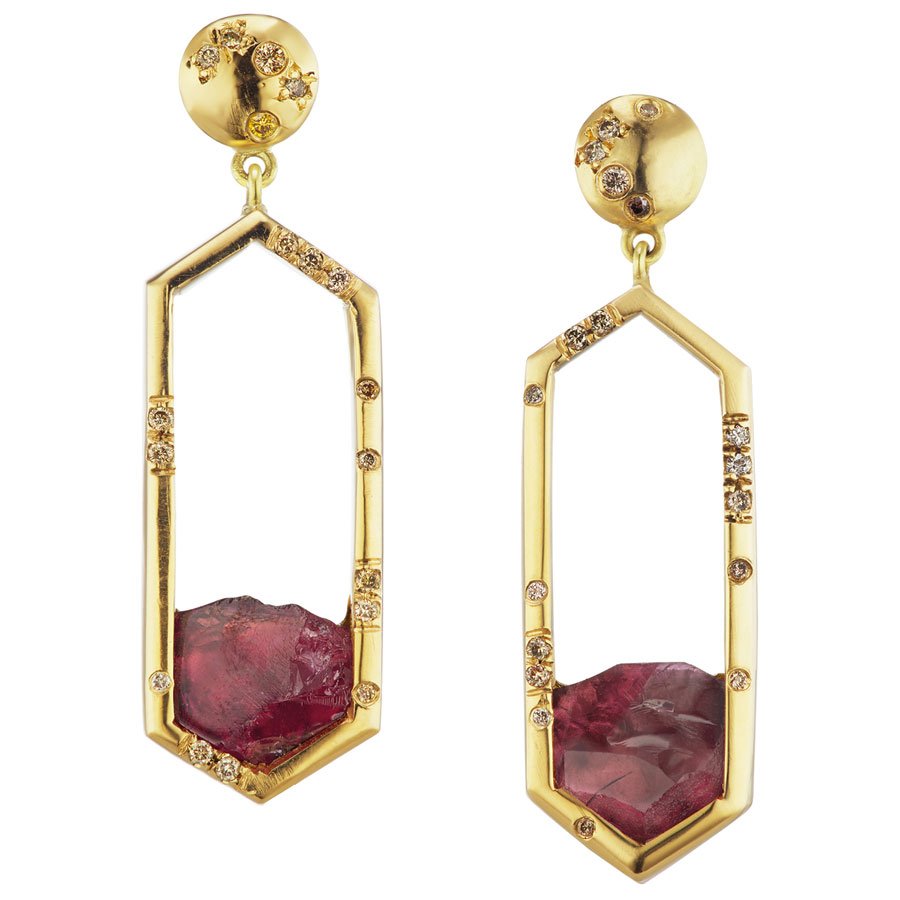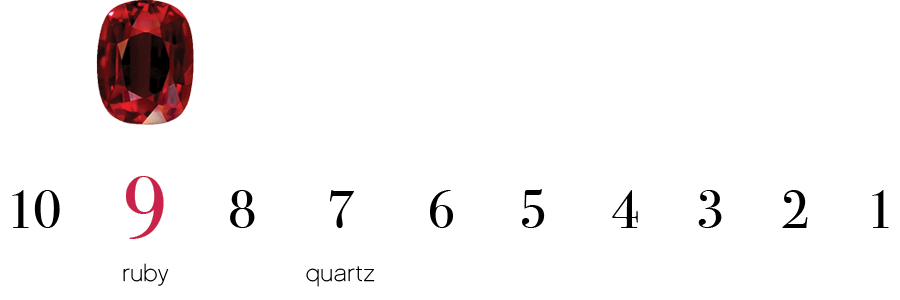Why is RUBY JEWELRY special?
First, rubies are among the most valuable of gemstones with a riveting history and some seriously beautiful science! Second, ruby has gorgeous doppelgängers in garnet, spinel, and tourmaline and is the same mineral species as sapphire. Get the skinny and shop a curation of ruby jewelry that will amplify your personal brand and align with your values.

SHOP
DESIGNER RUBY JEWELRY
ALL ABOUT RUBIES!
Ruby was significant to our ancient ancestors, least not because its hue resembles the blood flowing through our bodies, bringing us life.
Its legend as a “protector” evolved across civilizations in a variety of ways. Rubies made Burmese warriors invincible (if embedded into their skin). Some cultures believed it could heal wounds and ease inflammation. In India, it brought about peace between enemies.
Several historical sources claim dreaming of ruby is an omen of happiness and success.
Whatever ruby jewelry may symbolize for you today, we’ve outlined points to help you understand value and what to ask to make an informed decision on a piece of jewelry you will LOVE!
It could be a responsibly sourced ruby or an antique post-consumer recycled ruby like this:
A 3 carat ruby with a rare hand-carved floral motif - and a history I wish she could share…
SEEKING RUBY JEWELRY TO EMPOWER YOUR PERSONAL STYLE OR A JEWELRY GIFT SHE WILL LOVE AND WEAR?
Jewelry that amplifies your personal brand and helps you be seen (and taken seriously) is our specialty. Our shop has hand-picked curations from coveted designers that you will love and wear. The Brilliant Concierge can guide you in choosing statement pieces that were meant for you - or a jewelry gift for someone you love.
Discover what to know about ruby - and jewelry designed by WOMEN!
What makes a ruby valuable?
The most prized natural rubies have a vivid, vibrant red color (not too dark or too light) with slight purplish hints. There is an historical term “pigeon’s blood” that describes this. Swing too far purple, or shift into more orange territory, the less valuable it is.
Both rubies and sapphires are of the mineral “species” corundum. Chromium in the mineral is what gives the ruby its red color. If the hue is not saturated enough and appears more pink, it may be classified as a pink sapphire.
Apart from colored diamonds, ruby commands the highest price point per carat than any other gemstone in the market - and fine quality rubies over one carat are rare.
As is the case for most gemstones when it comes to clarity, gemstones with fewer inclusions command a premium.
Any stone can be manmade, but natural, untreated rubies will always be more valuable.
A Sparkling Tasting of ethical rubies!
Meet three responsible sourced rubies and discover the elemental qualities that make one more valuable than another: an emerald cut, a pear cut, and a cabochon.
Reserve your private Sparkling Tasting for you or someone you love - by appointment only in NYC!
Where is ruby found?
The most prized rubies are from the Mogok Valley in Myanmar (of Burmese ruby legend). To name just a few other countries quality rubies are found: Mozambique, Tanzania, Greenland, Sri Lanka, Vietnam, Madagascar, Thailand, Tajikistan, Afghanistan, Pakistan, and even the Republic of Macedonia.
What are the metaphysical properties of ruby?
This gemstone attracts vitality, abundance, wisdom, wealth, and creativity.
Just as our ancient ancestors believed gemstones were imbued with special properties, such as protection, wisdom, or courage, today we are empowered by the metaphysical properties of gemstones to manifest what we wish to create.
You may be interested in our guide to manifest your intentions with gemstones and jewelry!
The origin of gemstones: TRACEABILITY
The breathtaking gems you see here are courtesy of Nomad’s. Just as we know where our food comes from and who made our clothes, why not jewelry?
Below is an example of their proprietary Provenance Report, demonstrating their commitment to transparency, trust, and traceability. Beyond the descriptive details about each gemstone, the report discloses the history of the origin and a specific gemstone’s journey to the cutting wheel - literally mapping and disclosing the supply chain.
What does ethically and sustainably sourced jewelry mean?
Women and men at the forefront of this global conversation will have slightly different perspectives, but there is a shared ethos: responsible sourcing.
This encompasses traceability, conflict-free, protecting people, their skills, and the environment - be it land or sea.
An ongoing initiative worth following is the Jewelry Glossary Project.
The purpose is to create shared definitions of key terms within the jewelry industry for use by the trade and the public. The project was launched to increase transparency throughout the supply chain, by building consensus on definitions for key terms and creating accountability for their usage.
SHOP RUBY
DOPPELGÄNGERS:
GARNET, SPINEL, and TOURMALINE
As a precious stone, ruby is among the most valuable gemstones. Rubellite tourmaline, garnet, and spinel can be more attainable options that are (obviously) equally gorgeous!
SPINEL vs RUBY vs GARNET
Meet all three with this ruby-hued Sparkling Tasting!
This service guides you in choosing a variety of jewelry wardrobe needs such as:
engagement and cocktail rings
statement and stud earrings
pendants and layering necklaces
bangles and bracelets
responsibly sourced rubies
Learn more about this fluid service.
Sometimes natural gemstones have been “treated” to enhance the stone. This is commonplace, but it is an important question to ask, as this impacts the value. Any stone that has been heat treated will cost less than a stone whose color is natural.
Specific to ruby, surface fractures can be filled with (molten lead) glass to improve the transparency of the stone. They can also be subject to dyeing. Again, knowledge is power, as this impacts value and should always be disclosed.
The MOHS SCALE:
What is the hardness of RUBY?
rubies can scratch any other gemstone, but diamond and sapphire (which is the same mineral species)
Are rubies good options as engagement rings?
Yes!
The Mohs scale of hardness is important to consider when choosing a particular stone for a particular kind of wear.
It is the degree of mineral “hardness”, measured by the resistance which a smooth surface offers to abrasion: 1 (soft) to 10 (hard). For example, an 8 will scratch a gemstone that is a 7 or below. Simply put, the softer the stone, the more careful you need to be about wearing that stone in jewelry that may be exposed to more wear.
Does ruby scratch easily?
This is a question you’re most likely to ask when buying gemstones and jewelry. Knowing how hard it is (or any other stone) will help you to determine whether it is an everyday gemstone or an occasional piece.
Ruby (and sapphire) do not scratch easily. They are among the hardest of gemstones at 9 - only diamond is harder. A diamond would leave a scratch on a ruby, but not the other way around. This means it is a gorgeous candidate for everyday rings, versus softer gemstones that can be more susceptible to everyday scratches and damage with accidental bumps.
JOIN OUR COMMUNITY OF WOMEN LEADERS
Sign up: Step into our inner circle for style tips to amplify your visibility, inspiring conversations with women leaders, and insider access to jewelry that celebrates your story and inner power.
How to care for ruby jewelry
A few jewelry care basics can keep your pieces looking their best, avoid damage and loss of gemstones.
WEAR: When dressing for day or night, jewelry should be the last thing on and the first thing off. Contact with chemicals such as fragrance, hairspray, nail polish remover, household cleaners, and chlorine can harm jewelry.
Remove jewelry when cleaning, gardening, swimming, or playing sports, as contact with hard surfaces can scratch, damage, or loosen stones in prongs.
CHECK SETTINGS AND STONES: Inspect jewelry before wearing it to check if the stones are chipped, loose, or rattle in settings.
CLEANING: All precious metals, gemstones, and pearls should be cleaned regularly, but require different care. For example, ultrasonic cleaners can crack opals, shatter pearls or diminish their appearance. Avoid using steam and ultrasonic cleaners.
● For gemstones on the Mohs scale at 7 or above, a simple cleaning solution is warm water with mild soap and a soft toothbrush. For those at 6 or below, replace the toothbrush with a tightly woven microfiber or other soft cloth.
• A soft polishing cloth will keep any precious metal looking its best.
● Take any investment pieces to a trustworthy professional jeweler once a year for a thorough cleaning and inspection.
● See our full guide to How To Clean Fine Jewelry.
STORAGE: Keep jewelry individually stored in a pouch or box to avoid scratches and abrasions from other gemstones and metal, as well as general tangles and dents.
INSURANCE: For any jewelry of significant value, be sure to have it appraised, file any provenance and gemstone report in a secure place, and be sure to have it insured.


